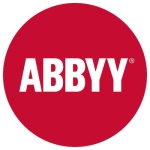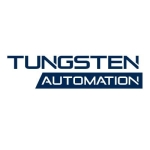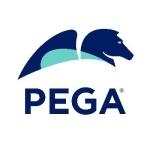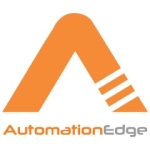What is our primary use case?
I use Automation Anywhere for the reconciliation process in the finance sectors, telecom industry, and banking and insurance sectors. Mostly, I use it for reconciliation and data feeding for SAP and Oracles applications. Sometimes, I use APIs, too.
How has it helped my organization?
Automation Anywhere has improved the way our organization functions. With every release, the tool improves its standards and technical aspects. They have also improved a lot from the security point of view. IQ Bot structures the unstructured document. It is very important to our organization. The time taken to realize the benefits of the solution depends upon the process. If it is a simple process, we would need one month.
What is most valuable?
Document understanding,Bot Store, AARI ie co-pilot are very useful.
What needs improvement?
The product has to improve document understanding. It must also provide more training.
For how long have I used the solution?
I have been using the solution for more than eight years.
What do I think about the stability of the solution?
I rate the tool’s stability a nine out of ten.
What do I think about the scalability of the solution?
The product is deployed across multiple departments and teams. More than 200 people are using the solution in our organization. I rate the solution’s scalability an eight out of ten. We faced some problems while scaling the tool. Once we upgrade the package, it doesn’t work. When we update the package again, the issue gets resolved.
How are customer service and support?
It is very easy to contact the support team. The team responds to our queries within a day. The product provides different levels like Platinum, Gold, Silver, and Bronze. If we enroll in the Bronze level, the support team will help us, but the time will be delayed. They'll reply within a day.
If we choose Silver, the team replies within two working hours. However, we get a response from the team within a day. The team reaches out to the customers who have raised tickets. The support team responds quickly. The team shares the documentation with us. If it doesn't work, they will immediately set up a meeting, look into the issue, and try to help us with the steps to follow.
The support team follows certain steps. If we raise a ticket, they provide some steps in a document containing the solution to our issues. We can immediately connect with the right person if it doesn't resolve our issues. To save time, if we raise a request to connect with the support team member, instead of sending a document, they should immediately connect with us to provide support.
How would you rate customer service and support?
How was the initial setup?
It's very easy to deploy the tool. We just have to export it from the development control room and import it to another control room. We can select the files we need and export or import them. It is very simple, like a file upload or download.
The time taken for deployment depends upon the number of files or packages since we use multiple workflows and tasks. It depends on the file size. However, it should not take more than three minutes. Even if it is complex, the deployment is completed within three minutes. If it is simple or moderately complex, depending on the file size, it uploads within 30 seconds. While deploying the product, we can see the progress in the control room.
What about the implementation team?
I have experience in deploying the solution. Whoever has the right to deploy can deploy the product. We can deploy it parallelly. The number of people required for the deployment depends upon the process. If it is five to six processes, one support team and one deployment team member is enough. We have five administrators. We also have 15 members in the support team.
The infrastructure team has some upgrade or patch activity every month. The team informs us about it. Usually, it happens only on weekends. Most of the bots will be idle on Sunday. It will run only for a few cases. Maintenance takes three hours monthly.
What was our ROI?
I have seen an ROI on the solution. The ROI depends on the use case. Some use cases have more documents we have to read, and we need to feed them into some applications. We check the FTE benefits and calculate the ROI based on it.
What's my experience with pricing, setup cost, and licensing?
The product’s pricing is reasonable. The pricing depends upon the partner. We can get Runner, Attended, Unattended, IQ Bot, and Bot Insight licenses. The price is reasonable if we can get whatever the organization needs. There are no additional costs.
Which other solutions did I evaluate?
The product fails in some environments. In some applications, the product behaves weirdly. UiPath is mostly accurate, and we are able to automate it. Automation Anywhere has to improve its technical features. It doesn’t work in some applications without any workaround. UiPath has better stability than Automation Anywhere. Everything works perfectly in UiPath. Sometimes, some controls don’t work after an upgrade in Automation Anywhere. We must update the package again to make it work. Compared to Automation Anywhere, we might have to wait longer for UiPath’s support team.
What other advice do I have?
Currently, I am using Automation 36O. The solution has added Google, Microsoft, and forms recently. We can easily integrate them. We can build a custom form for an Attended bot. The user can feed data, and the bot can pick it up and run it. Most of the tools have integrated this form. Instead of creating custom forms, the product provides an in-built forms section.
The solution has drag-and-drop features. There is no coding. If a person is well versed in coding like Java, Python, and VBScript, they can integrate the product. Even if we have no technical skills, it is very easy to drag and drop. It will work. We just need logical thinking.
The time taken to train non-technical employees depends upon the employees. Within two weeks, the employees would be able to understand the tool. They would also be able to develop simple processes. It is easy to expand the product across an entire company.
Integrating RPA bots, APIs, business applications, and documents into the solution is not hard. It is user-friendly. Integrating any web application or third-party application like Salesforce is very easy. I have used Salesforce API and some third-party web applications. The tool also provides some in-built APIs developed by the web application team. When I face some restrictions, the team provides me with APIs, which are easy to integrate. If something is not possible to automate in GUI, we choose a different solution for API building. Everything can be done within Automation Anywhere. It is easy to integrate the solution with third-party products.
We haven't explored more opportunities. We are using only simple processes. I would choose an RPA solution over an API integration. We need to have some security controls and approvals before we can integrate APIs. In RPA, we can not only integrate API but also have other in-built action items.
People can definitely choose Automation Anywhere. We will see a lot of changes and improvements in the upcoming versions. Based on these updates, organizations will get more benefits from the tool.
Overall, I rate the product a nine out of ten.
Disclosure: My company has a business relationship with this vendor other than being a customer: Partner




















